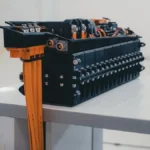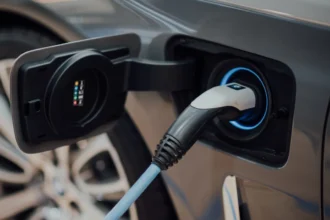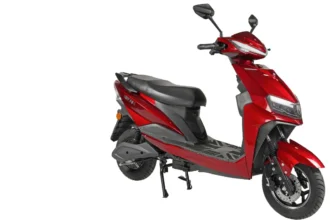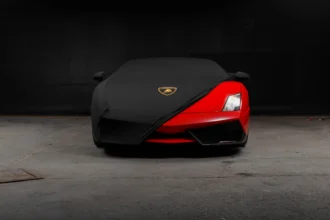BYD Will Open Center In Hungary, Create Jobs
BYD is a big electric car company from China. Its boss, Wang Chuanfu, and Hungary’s leader, Viktor Orban, said BYD will build a new European center in Hungary. This place will help with sales, service, and testing. It will make 2,000 new jobs. BYD’s first factory in Hungary, built in 2016 in Komarom, puts together electric buses. Right now, it can make 400 buses a year in one work shift, and they want to raise that to 1,000 a year soon. Another factory for electric cars is being built.
This is important because Hungary is getting more jobs and business from China. It will also help more electric cars and buses get made in Europe.
BYD’s Komarom bus factory is growing, aiming to build up to 1,000 buses each year. More jobs and electric vehicles will help the area.
In short, BYD’s moves make more jobs and bring new electric cars and buses to Hungary.
For the complete story and full context, please refer to the original article from financialexpress.com.
Electric Vehicles in Thailand Grow Fast With Investment
Big car companies like BMW and Toyota met in Thailand to talk about the future of electric and hybrid cars—cars that run on batteries or mix gas and electricity. Thailand now has 206,000 registered xEVs in 2024, up from 84,500 in 2022. 644 new investment projects for these cars and their parts got over 280 billion baht in funding. Market share for xEVs grew to 13%-15.4% in 2024 as more people chose these over regular cars.
This matters because more electric cars can help the environment and create local jobs, making Thailand important for new car technology.
There is strong momentum now—with market share at 13%-15.4%—as fewer people are buying regular cars. Electric cars are growing quickly.
Thailand is moving fast to become a leader in electric cars.
For the complete story and full context, please refer to the original article from chinadailyasia.com.
Tata.ev Starts 10 Fast MegaChargers on Indian Highways
Tata.ev, a top company for electric cars in India, just put 10 strong charging stations, called MegaChargers, on busy highways. One charger in Vadodara is 400 kW and lets six cars charge at once. It adds up to 150 km in 15 minutes. Four chargers on the Delhi–Jaipur Highway are 120 kW and spaced 60 km apart. Tata wants 400,000 charging points by 2027, working with ChargeZone and Statiq. Tata EV drivers get up to 25% off, special services, and help anytime.
This is important because it will help many more people drive long distances in electric cars and charge quickly.
Now, over 20% of chargers in busy spots are used in India. This helps Tata’s goal to reach 400,000 chargers by 2027.
This move will make electric car trips simple and faster for everyone in India.
For the complete story and full context, please refer to the original article from timesofindia.indiatimes.com.
Electric Cars Are Growing Fast Around The World
Electric cars are selling very quickly all over the world. In 2024, over 17 million electric cars were sold, making more than 20% of all cars sold electric for the first time. By 2030, electric cars could reach over 40% of the car market globally, with China leading sales.
In Asia and Latin America, the share of electric cars is different. Thailand saw about 13-15%, Brazil over 6%, India around 2.5%, and Argentina just over 0.1% in 2024. This shows that some countries are moving faster than others, and there are big differences in electric car adoption across regions.
It will be interesting to watch if more countries can increase their electric car sales in the next few years.
For the complete story and full context, please refer to the original article from iea.org.
Tata.ev Offers Big Deals on Electric Cars to Celebrate 2 Lakh Sales Milestone
Tata.ev is giving special offers up to Rs 71,86,000 on cars like the Curvv EV, Punch EV, Nexon EV, and Tiago EV. These deals, like free home chargers and 6 months free charging, started in September 2024 to celebrate Tata Motors selling 2 lakh electric cars in India. New cars have battery options for long driving.
This year, the Tata Punch EV sold the most, with 22,724 units. Still, Tata’s overall electric car share dropped to 36% by April 2025. Giving big offers might help them sell more cars and make more people choose Tata electric cars.
Tata.ev’s new deals could make electric cars more popular and easier for many Indian families to buy.
For the complete story and full context, please refer to the original article from hindustantimes.com.
Tata Motors Teams Up With Vertelo To Give Easy Leases For Electric Trucks
Tata Motors and Vertelo will work together to give special leasing offers for electric commercial vehicles in India. They want to help fleet owners get these new greener vehicles more easily. This move helps more businesses use electric trucks and buses, making transport cleaner. Their lineup has several electric trucks and buses.
Last year, electric bus sales in India went up by 81%. Leasing is good for more people to use electric trucks and buses, and Tata Motors is leading with 33.71% in electric commercial vehicles by March 2025 and 40% in electric buses in 2024. This partnership could help the market grow faster.
This partnership is likely to make electric vehicles easier for companies to use in India soon.
For the complete story and full context, please refer to the original article from indiatoday.in.
Chandigarh Reaches Electric Car Incentive Limit, New Buyers Lose Out on Discounts
Chandigarh has stopped giving money rewards for people buying new electric cars, because the special offer for the first 2,000 cars in the city is completely used up. The Electric Vehicle Policy, which began in September 2022, aimed to reward early buyers — like giving up to Rs 1.5 lakh for some cars. Other benefits, like registration fee waivers, remain.
Since September 2022, more than 20,000 electric vehicles have been registered in Chandigarh. The incentive for the first 2,000 electric cars is now gone, which means people kept buying these cars even after the rewards were used up. This policy helped many people switch to electric vehicles, and electric car numbers are still going up.
The end of cash rewards might slow new car sales, but other benefits could still attract people to choose electric vehicles in Chandigarh.
For the complete story and full context, please refer to the original article from tribuneindia.com.
Electric Vehicle Sales Grow Mostly in China and Europe, Drop in North America
Worldwide, more people bought electric and plug-in hybrid cars in April, with sales jumping 29% over the past year. China led with a 32% increase, reaching 0.9 million cars, while Europe’s sales rose 35% to 0.3 million. North America fell 5.6% to 0.1 million. Total sales in April reached 1.5 million cars worldwide.
Even though North America’s electric car sales for the first quarter of 2025 reached 0.5 million with a 16% rise, growth during January to April was only 5%, at 0.6 million cars, likely because of the 25% U.S. tariff. Mexico saw massive growth, and Tesla’s sales fell.
Many countries are seeing changes in how people buy and use electric cars. Governments, taxes, and new car models are shaping what will happen next.
For the complete story and full context, please refer to the original article from reuters.com.
India Plans Quick EV Charging Stations on Highways and Bus Stops Nationwide
The Indian government is getting ready to set up 360 kW charging stations along highways, expressways, and bus stops all over the country. These new fast chargers can power up electric cars, buses, and trucks in only 15 minutes. Their goal is to make travel easier for electric vehicles and connect both cities and villages.
By late 2024, India already had more than 25,000 public EV chargers. Most strong chargers, like 60kW or 240kW ones, are mainly in bigger towns or key highways. While FAME II supported thousands of new chargers, they are still mostly near big cities instead of being spread everywhere.
This step could make electric travel smoother and help more people use cleaner vehicles across India.
For the complete story and full context, please refer to the original article from energetica-india.net.
Tata Motors Unveils Harrier EV and Sierra EV for 2025 Indian Launch
Tata Motors plans to bring two new electric vehicles—the Harrier EV and Sierra EV—to India in 2025. These cars aim to attract buyers who enjoy a stylish lifestyle and want modern tech, larger batteries, all-wheel drive options, and special safety systems. The Sierra EV revives a classic name with a fresh, roomy design. Tata is building its biggest electric line-up, using shared platforms and local resources to grow with improving EV infrastructure and policies expected by 2025.
People believe the Harrier EV may cost between ₹24-30 lakh, while the Sierra EV could be around ₹20-30 lakh. Other cars in this space, like the MG ZS EV, BYD Atto 3, and Hyundai Creta EV, have prices ranging from ₹18 to ₹34 lakh. This shows buyers will have many choices among new electric SUVs soon.
These launches by Tata could make electric cars more popular in India, giving people more modern options.
For the complete story and full context, please refer to the original article from cartoq.com.
GM And LG Bring New Cheaper, Stronger Batteries To Electric Trucks In US
General Motors and LG Energy Solution will make special LMR batteries, using lithium manganese-rich prismatic cells, for electric trucks and SUVs in the United States.
Pre-production starts in late 2027, with full rollout in 2028. These batteries hold 33% more energy than current LFP types, lower costs, and help trucks drive over 400 miles. GM and LG are working together in Michigan.

These new batteries will have costs like LFP cells but pack 33% more energy. They also need less cobalt and nickel, which makes them cheaper to use for big trucks. I think moving away from expensive metals is a smart way to help electric trucks become more affordable for everyone.
This partnership between GM and LG Energy Solution could help make electric trucks better and more available for US drivers soon.
For the complete story and full context, please refer to the original article from thebuzzevnews.com.
XPeng Launches AI-Powered P7 Electric Sports Sedan to Rival Tesla and BYD in China
XPeng Motors, working with designer Rafik Ferrag, is releasing a new version of its P7 electric sports sedan in China during the third quarter of 2025. The car’s first model came out in 2018, and now the new one features smart driving modes powered by AI.
This P7 has a sleek, shiny body, a smart digital dashboard, and a big glass roof. It uses a “Turing chip” made by XPeng for driving help, relying on cameras and sensors instead of using something called Li-dar. The car focuses more on a sporty look than on extra family space.

The sedan can drive up to 576 km on one charge. Its 86.2 kWh battery goes from 10% to 80% in only 29 minutes. It races from 0 to 100 km/h in just 4.1 seconds with all-wheel drive.
Since 2020, the P7 has scored high marks for safety from both C-NCAP and Euro NCAP. But XPeng’s P7 sales in China were in the hundreds during April 2025, far below Tesla Model 3’s 3,200 and BYD Han EV’s tens of thousands. The new P7, expected at about RMB 300,000, will directly compete with these brands for buyers in the mid-high price range.
Exciting tech and strong looks could help XPeng’s P7 stand out, but sales will show if that is enough to catch rivals.
For the complete story and full context, please refer to the original article from ndtv.com.











